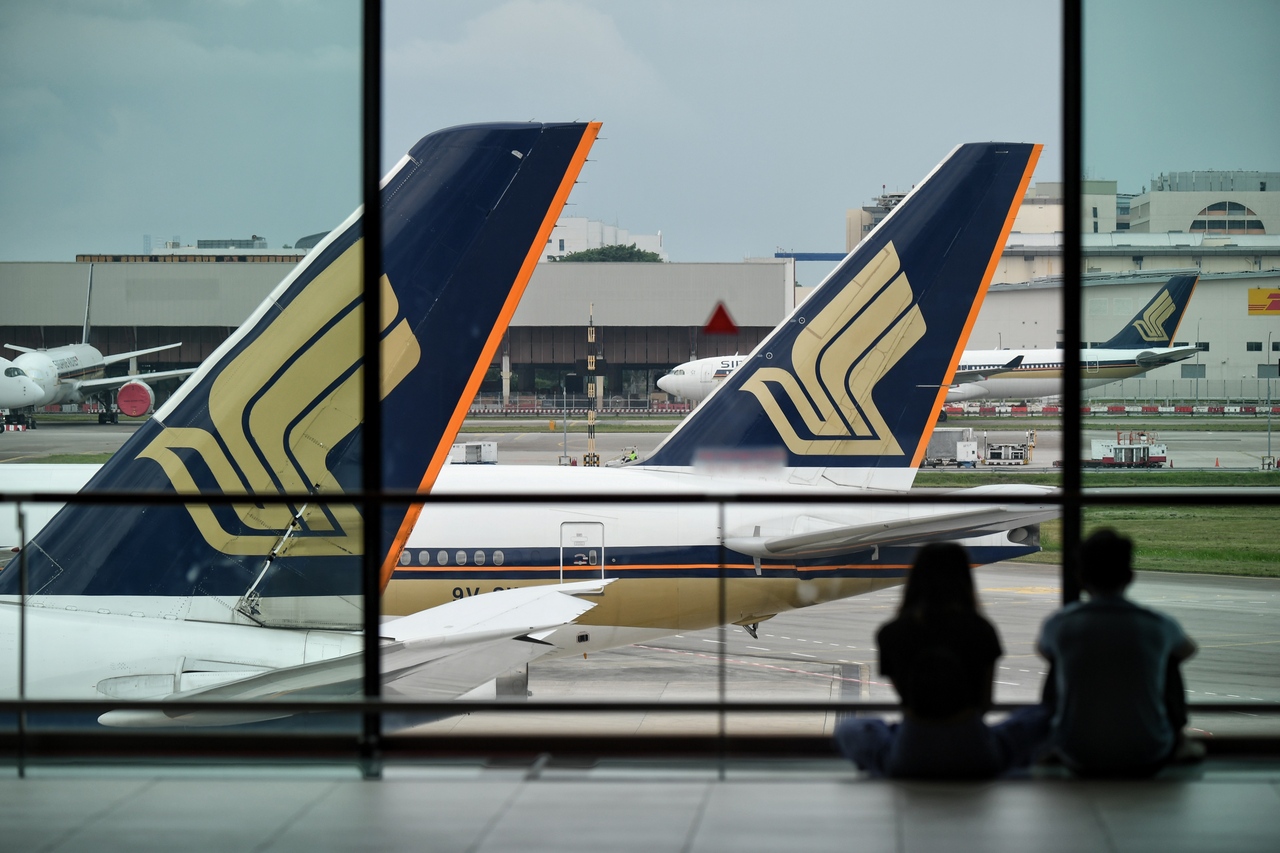SIA Group posts $4.3 billion loss after 'toughest year in history'
Sign up now: Get ST's newsletters delivered to your inbox

SIA reported a record net loss of $4.27 billion for the financial year ended March 31.
PHOTO: ST FILE
Follow topic:
SINGAPORE - Singapore Airlines racked up a whopping $4.27 billion net loss for the year after the worst crisis in its history sent passenger traffic dropping 98 per cent and grounded the bulk of its fleet.
The red ink came on the back of a $12.16 billion, or 76 per cent, dive in turnover to $3.82 billion for the 12 months to March 31 as passenger revenue across all its three carriers - SIA, SilkAir and Scoot - dived in what it called "its toughest year in history".
If not for a $758 million, or 39 per cent, increase in cargo revenue to $2.71 billion, the top line would have been even worse.
The group also recognised mark-to-market losses of $497 million on ineffective fuel hedges, following a downward adjustment in capacity and less consumption. But it had a $283 million fair value gain on fuel hedges due to a rise in fuel prices during the second half of last year.
This is the second straight year of losses for the airline.
It posted a loss of $212 million on revenue of $15.98 billion in the 2019/20 fiscal year, just as Covid-19 started to hit home in the first quarter of 2020.
SIA group recorded an impairment loss of $1.73 billion in the 2021 financial year on 45 surplus older generation aircraft which were removed from the fleet.
It also incurred a $44.7 million hit for manpower rationalisation and took an impairment of $36.9 million on base maintenance assets at subsidiary SIA Engineering.
All in, it has been a long annus horribilis for the airline, which in the 2018/19 year and before Covid-19, posted net profit of $683 million on record revenue of $16.3 billion.
The airline carried 78,000 passengers in January compared with 3.4 million in January last year.
But things are improving gradually, with passenger numbers at 110,000 in April - the highest since Covid-19 broke last year.
Despite all this, SIA was still stable financially. It had net cashflow of $5.13 billion as at March 31 and cash and cash equivalent of $7.78 billion in the kitty.
SIA also announced on Wednesday that it would raise another $6.2 billion via the issue of the second tranche of its mandatory convertible bonds.
SIA has raised $15.4 billion in new liquidity since April 1 last year.
"The extra funds will allow us to better manage capital expenditure and cash burn, which is now below $150 million a month, compared to $350 million six months ago," said an SIA spokesman.
Indeed, with international borders still closed - the much vaunted Hong Kong-Singapore bubble is now delayed amid new surges in cases - SIA will need all resources it can muster to remain competitive when normality returns.
Meanwhile, the airline is preparing for that future. Besides boosting its cash holdings, SIA has also starting restructuring its fleet.
During the year, it inked an agreement to defer some aircraft delivery, saving $4 billion in capital expenditure over five years. It also converted orders for 14 Boeing 787-10 aircraft to Boeing 777-9 planes, to complete the fleet renewals over next five years.
This means it will operate one of the youngest fleets in the world, comprising new B787, A350 and B777 planes, which it reckons will boost efficiency and cut costs.
"The funds raised and the investment we are making in new aircraft, digital capability and staff will give us the firepower and capability to emerge from this crisis as a leader," added the SIA spokesman.
But when the recovery will actually come remains an open question. The International Air Transport Association reckons pre-Covid traffic levels will return only in 2024.
SIA shares closed down 3.3 per cent at $4.70 on Wednesday.

